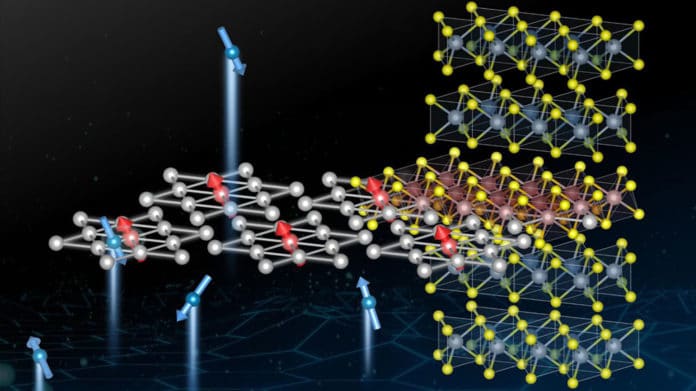Until now, a unique quantum-mechanical interaction between electrons and topological defects has only been observed in engineered atomic thin layers. But, an international team led by scientists at EPFL has unveiled the same in layered materials.
The defects in atomic structure often lead to technologically interesting properties of materials. Even in the metallurgical industry, atomic-scale defects like dislocation enhance the strength of forged steel.
Kondo effect is yet another manifestation of atomic-scale defects. The Kondo effect affects a metal’s conduction properties by scattering and slowing the electrons. It also changes the flow of electrical current through the material.
When the diluted magnetic atoms align, all the electrons spin around them, the effect slows the electrical current motion inside the material, equally along every direction. The effect can be observed in many systems nowadays, including carbon nanotubes to superconductors.
This new study offered a new perspective on the Kondo effect. It was made possible using the most advanced material characterization tools and microfabrication technologies available.
Scientists determined the impact of magnetic defects responsible for Kondo scattering. This scattering is generated by atomic-thin planes in a layered material. Due to thermodynamics, the thin planes take an anomalous atomic configuration.
Such defects are intrinsically non-magnetic, but at low temperatures, the electrons self-organize their spin within the defective layers producing a local magnetic planar defect inside the material.
In this study, scientists used the innovative Focused Ion Beam microfabrication method. The method enabled the first experimental evidence of the anomaly in electronic transport properties.
The discovery that native defects can produce such phenomena opens a new and more accessible way to explore unique quantum interactions in materials, which could boost discovery and transfer to technological solutions.
Edoardo Martino, the study’s first author, said, “Once we first identified the anomaly in electronic conductivity, we remained very puzzled. The material was behaving like a pretty standard metal whose electrons move along the plane. Still, when forced to move between planes, its behavior became neither a metal nor an insulator, and it was unclear what else to expect. It was thanks to a discussion with our colleagues and theoretical physicists that we were pushed in the right direction: apply a magnetic field and see what happens.”
When scientists applied the magnetic field, they realized that the more influential the magnet, the more exotic the material’s behavior becomes.
For the experiment, they accessed some of the world’s most powerful magnets. The team performed experiments up to 34 Tesla in static conditions and pulses up to 70 Tesla for a few milliseconds.
Konstantin Semeniuk, a scientist who worked on the study, said, “My first guess was that it is a new type form of Kondo effect, even though we did not introduce magnetic species in the crystal.”
Martino said, “Once we completed our investigation, the result was clear. The atomically thin defects create a magnetic wall in the material that bounces back some of the electrons that try to cross it. Unraveling the source of the Kondo effect has shown that thermodynamics can make big surprises. We believe there is a lot more to discover in this field, better understanding of atomic-scale defects by electronic microscopy, local magnetic measurements, and new quantum simulations to understand the formation and effect of such defects in layered materials.”
Journal Reference:
- Edoardo Martino, Carsten Putzke et al. Unidirectional Kondo scattering in layered NbS2. npj 2D Materials and Applications 18 November 2021. DOI: 10.1038/s41699-021-00265-6
